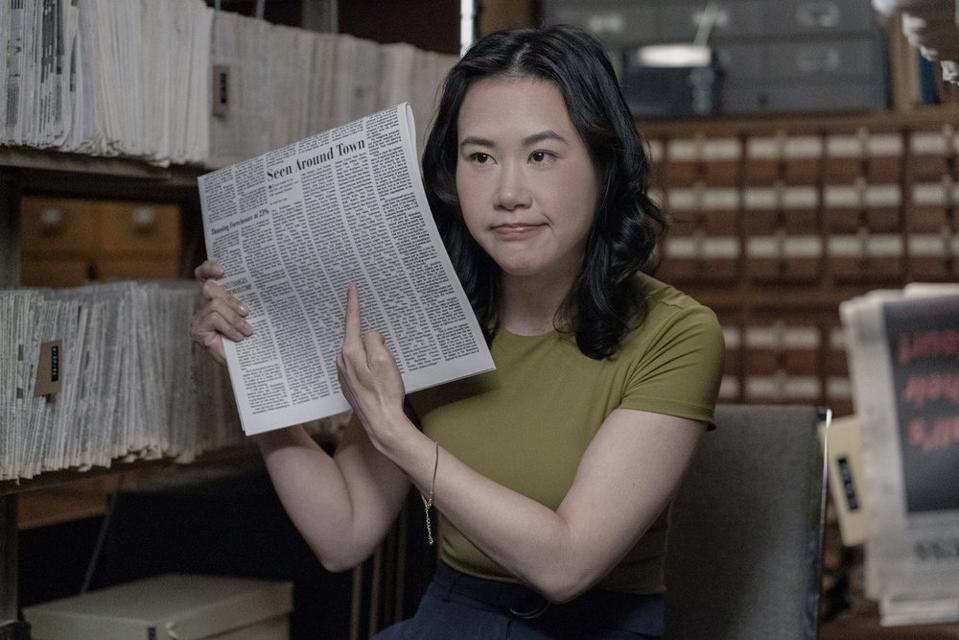When Greg Daniels first adapted The Office for U.S. audiences, he originally gave it a longer title — The Office: An American Workplace. Hardcore fans of the nine-season NBC comedy classic may even remember that was the actual full name of the show’s in-universe documentary that aired in Season 9. Two decades later, and with audience affection for The Office as enduring as ever, Daniels has once again built an all-new mockumentary-style workplace comedy around an nondescript office, this time in the form of The Paper — a new Peacock series about a Midwestern newsroom fighting for survival.
When Peacock debuts all 10 episodes of The Paper’s first season on Thursday, both the format as well as the creative DNA should feel instantly familiar to Office fans. The hook: The same documentary crew that once chronicled life inside Dunder Mifflin is back, this time turning its lens on the world of local journalism. At a time, of course, when both the fictional and real-world versions of the industry are battling existential crises that include advertising dollars having almost completely migrated to the internet and a contracting subscriber base, among other things.
‘The Paper’ co-creators, on the affection for newspapers
When I spoke with Daniels and his co-creator Michael Koman, they both emphasized that choosing a newspaper as their show’s new workplace wasn’t just a matter of swapping one office setting for another.
“There’s a lot of affection for newspapers and a lot of poignancy in the feeling that they’re under assault, vanishing in the same way that the original show was about paper-sellers in a digital world,” Daniels told me. “So there are emotional parallels there. But we also liked the idea that the documentary crew stumbled on this story, which they recognize is important, about the hollowing out of regional newspapers.”
Koman (who co-created Nathan for You) pointed out that the documentary style demands a believable reason for the cameras to be there. “In a show like this, the documentary crew is one of your characters. They’re the observers, and it’s really nice if you can give them a good reason to stay there and cover this story.”
That reasoning helped anchor the setting for The Paper inside the office of a newspaper with dwindling resources, a beleaguered staff, and a boss whose belief in the institution borders on the romantic. From there, the comedy grows naturally out of the quirks and challenges of trying to revive a struggling newsroom.
‘The Paper’ and its connection to ‘The Office’
Being that it’s a half-hour comedy, The Paper isn’t exactly aiming to serve as an explainer on the economics of journalism here. Still, Daniels and Koman drew on real research to capture the rhythms and absurdities of newsroom life. Daniels, for his part, visited papers like The Dallas Morning News and spoke with journalists, while Koman leaned on his lifelong fascination with journalism’s luminaries like Gay Talese and Ben Bradlee.
Journalists, as a result, will have no trouble recognizing themselves in The Paper, which captures the quirks, jargon, and inside jokes of newsroom life while still delivering plenty of laughs amid the chaos. The newsroom in question, The Toledo Truth Teller, starts off the series as a so-called “ghost newspaper,” having eliminated original reporting in favor of cheaper syndicated content. Ned Sampson (Domhnall Gleeson), the new editor, wants to reverse that decline by reinvesting in actual journalism.
Along the way, The Paper threads in familiar concepts and terminology, from the “five W’s” of reporting to debates over churnalism and even in-house experts moonlighting as reviewers à la Wirecutter.
“Obviously, we’re not doing a Frontline piece on journalism — we’re doing a comedy show,” Daniels said. “But my hope is that you side with these characters and what they’re trying to achieve, and that it reminds people it’s important to have journalism in their communities locally.”
Koman echoed the sentiment: “If nothing else, it’s a reminder that if somebody’s doing their best to keep me informed about what’s going on in the city, it might not be a bad idea to support that.”
With Gleeson’s Ned stepping in, the staff at The Toledo Truth Teller finally gets a shot of the optimism that’s been missing from their office (and industry) for a long time. The question, as Daniels put it, is whether Ned can “actually pull this off and bring the staff with him.” That against-the-odds spirit is what the documentary crew latches onto as the thread tying their story together.
The journalist side of my brain could certainly be cynical and wonder — if one accepts the premise that not enough residents of local communities are supporting their newspapers — why those same consumers would want to spend their free time watching a show about the journalism that they’re not supporting.
We’ll have to wait and see what critics and viewers make of the series, but what I’ll say at this point, after having screened Season 1 early: If nothing else, The Paper makes clear that cheering for a scrappy newsroom can be every bit as fun and feel-good as following the antics and heartfelt human stories unfolding inside a regional paper supply company based in Scranton. Something about the beauty in the ordinary.

